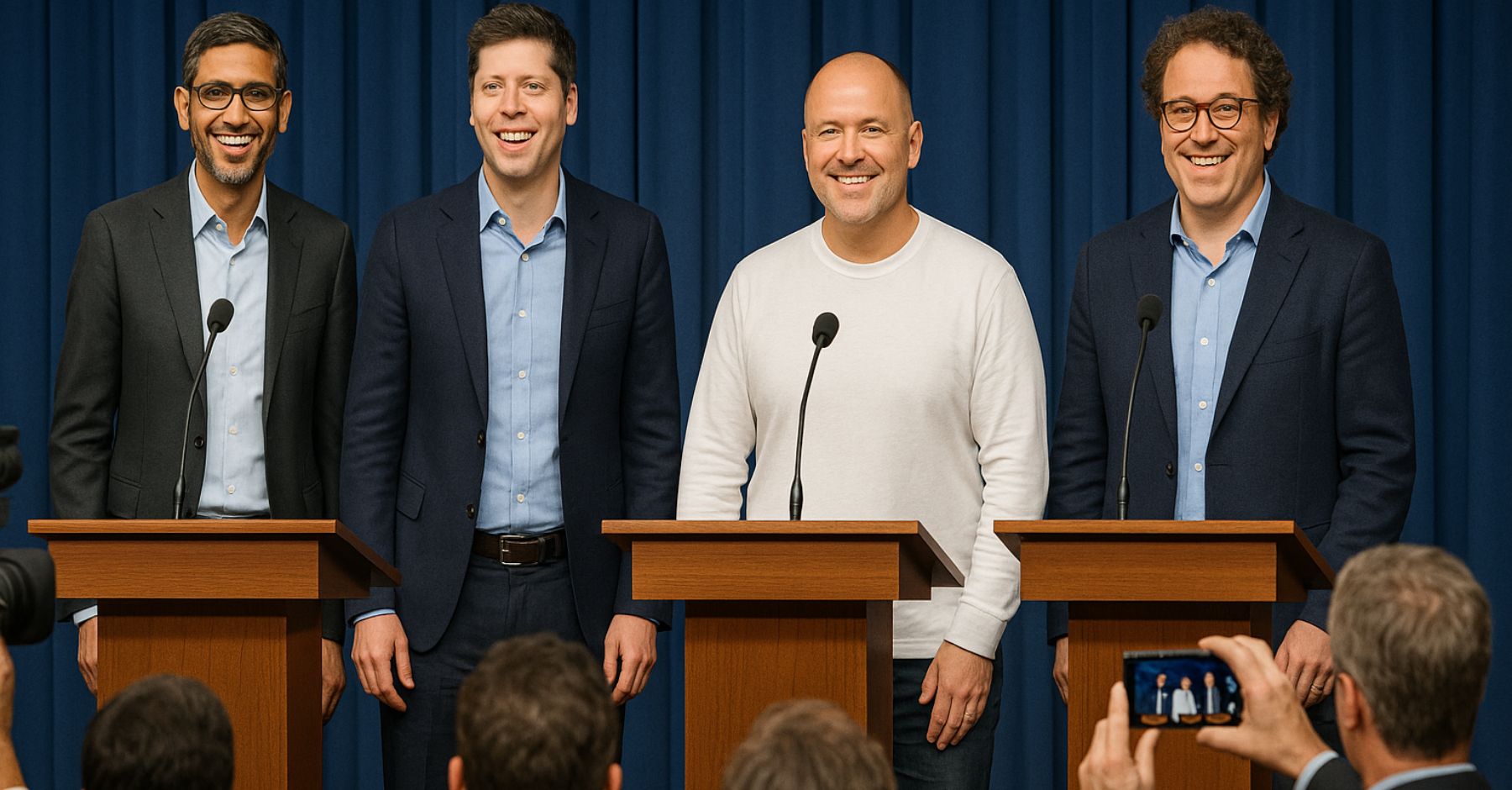Each week we’ll gather headlines and tips to keep you current with how generative AI affects PR and the world at large. If you have ideas on how to improve the newsletter, let us know!
What You Should Know
Recapping a busy week
If you celebrated the unofficial start of summer early last week, you missed quite a lot. Inboxes are surely full after the long weekend, so we’ll get right to the point and catch you up on the AI world.
- On a normal week, Google might have dominated the news cycle with its two-day annual developer conference, Google I/O. It sure tried with 100 announcements. The most consequential of which was rolling out AI Mode, yet another way to search that was originally launched for premium subscribers in early March. Brands and publishers are still working out the implications for search-focused content creation and website traffic.
- Google also debuted a new AI video generator, Veo 3, which includes audio (unlike OpenAI’s Sora). It’s so lifelike that it’s already confusing viewers about what’s real and what’s not.
- Wednesday, OpenAI purchased io (not to be confused with Google’s I/O — for all AI can do, it is still not good at naming things), a company started last year by ex-Apple exec and iPhone designer Jony Ive, for a whopping $6.5 billion. Together, they will build an AI device that will purportedly be released next year. The announcement is quite something. Come for the awkward photo. Stay for the awkward video.
- Not to be outdone, Anthropic launched its latest generation of models on Thursday. The company claims Claude 4 Opus is “the world’s best coding model, and Claude 4 Sonnet is “a significant upgrade to Claude Sonnet 3.7.” Paid subscribers have access to both models, but communicators will probably benefit from Claude 4 Sonnet more (which is available for free users, too).
If that feels like a very dense download of things you missed, you’re not alone. Axios reports that 77% of Americans want AI companies to slow down. And that goes double for long holiday weekends.
Elsewhere …
- PODCAST: How Mindset Beats Skillset in the Age of AI
- Pew Research: What Web Browsing Data Tells Us About How AI Appears Online
- Will AI Empower the PR Industry or Create Endless Seas of Spam?
- Apple’s First Smart Glasses Could Arrive Next Year
 Not so fast…
Not so fast…
What’s happening: Sometimes you need multiple prompts to prime AI tools with the information they need to create content, help you brainstorm, or map out a plan. It’s particularly helpful if you have multiple files to upload for context or you want to see what questions the model has before it starts drafting.
But chatbots have a tendency to be antsy and start producing outputs before users are done offering enough context to produce a well-informed response. All it takes is one prompt, and AI models will go off to the races.
Why it matters: AI can definitely help you move faster, but faster doesn’t always mean better. For example, if an AI tool produces a new hire press release before you’ve finished sharing all the new hire’s credentials or background information, you’ll quickly get a nonsense draft that’s full of hallucinations. Now you have to start over, edit the prompt, or spend more time trying to identify everything the tool made up.
Try this: If you need multiple prompts to set up an assignment, include something like “do not start drafting until I say so” at the end of your first prompt (I like using all caps too, just to really drive the point home). This gets the tool to slow down, even if it just means sharing its intentions before producing content.
Quote of the Week
“I have a growing sense that everything I have learned over the last 30 years has led me to this moment. While I am both anxious and excited about the responsibility of the substantial work ahead, I am so grateful for the opportunity to be part of such an important collaboration. The values and vision of Sam and the teams at OpenAI and io are a rare inspiration.”
— Jony Ive, Co-Founder of io, announcing his partnership with OpenAI CEO Sam Altman
How Was This Newsletter?



